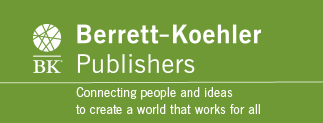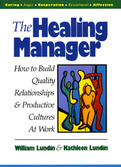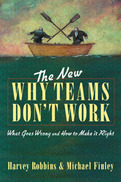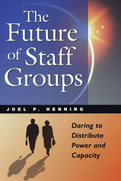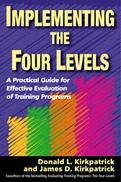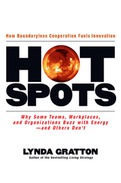2012
1993
This is the first book to squarely face the tough emotional and relationship issues in the workplace-anger, fear, distrust, conflict, resentment-and to provide practical and proven methods for creating more productive work environments. Based on fifteen years' experience using these methods inside workplaces, Bill and Kathy Lundin show how to:
o Replace anger and suspicion at work with caring, trust, and cooperation;
o Unlock the goodwill, learning, and creativity of everyone in an enterprise;
o Empower all employees to facilitate productive relationships at work.
The "Healing Manager" that the Lundins describe is any employee-whether CEO, first-line supervisor, or hourly worker-who helps others grow emotionally and intellectually, and who cultivates caring relationships on the job. The Lundins show that such well-being is the real secret to productivity, quality, and service.
The Lundins draw on counseling techniques, improvisational theater, and common wisdom to offer practical tools to help all managers and employees change their workplace behaviors, attitudes, and relationships.
This is the first book to squarely face the tough emotional and relationship issues in the workplace-anger, fear, distrust, conflict, resentment-and to provide practical and proven methods for creating more productive work environments. Based on fifteen years' experience using these methods inside workplaces, Bill and Kathy Lundin show how to:
o Replace anger and suspicion at work with caring, trust, and cooperation;
o Unlock the goodwill, learning, and creativity of everyone in an enterprise;
o Empower all employees to facilitate productive relationships at work.
The "Healing Manager" that the Lundins describe is any employee-whether CEO, first-line supervisor, or hourly worker-who helps others grow emotionally and intellectually, and who cultivates caring relationships on the job. The Lundins show that such well-being is the real secret to productivity, quality, and service.
The Lundins draw on counseling techniques, improvisational theater, and common wisdom to offer practical tools to help all managers and employees change their workplace behaviors, attitudes, and relationships.
-
Based on the authors' bestselling book Why Teams Don't Work-winner of the Financial Times/Booz Allen & Hamilton Global Business Book Award as the Best Management Book of the Year in the Americas
-
Teaches people how to be good team members and teaches team members how to be team leaders
-
Includes seven completely new chapters as well as new and updated examples and information throughout
The move to teams has largely failed, say Harvey Robbins and Michael Finley, mainly because teams themselves are failing to think through the human implications of teaming. The New Why Teams Don't Work is a handbook for team members and team leaders to maintain the highest possible level of team intelligence-the skills, attitudes, and emotional flexibility to get the most out of a team's inherent differences.
Describing what teams are really like, not how they ought to be, the book teaches people how to work together to make decisions, stay in budget, and achieve team goals. Robbins and Finley show, for instance, how to get hidden agendas on the table, clarify individual roles, learn what team members expect and want from each other, choose the right decision-making process, and much more.
Updated throughout, the book includes completely new material on team intelligence, team technology, collaboration vs. teamwork, team balance, teams at the top, the team of one, plus all new and updated examples.
Looked down on as functionaries by senior management and dismissed as roadblocks by their line group colleagues, corporate staff members have traditionally had only one surety--as overhead-identified costs, theirs are sure to be the first positions eliminated in any kind of crunch. Corporate staff have been the neglected resource in the overall corporate arsenal and Joel Henning makes a powerful argument that current market realities require that they can no longer be ignored.
The Future of Staff Groups takes the unusual tack of recognizing staff groups as the overlooked power brokers in corporations. It is an illuminating book about corporate staff groups within organizations--those that perform internal functions such as information systems departments, finance departments, human resource departments, quality departments, and so on--and the impact that they can have on the prosperity and success of the organizations they serve.
Competitive advantage in any of today's markets presumes competence. To go beyond competence to dominate a market, a company needs to know more, create more, learn faster, and communicate better than the competition. This is the work that corporate staff groups were born for -- not 'just to do', but to build within others the 'capability to do'--what Henning calls 'building capacity.'
Information systems groups retrieve, manipulate, format and distribute the information that drives the organization. The finance department identifies and processes the issues and resources upon which critical business decisions are based. Human resources determines the shape of the organization and how it will function. Building their capacities, and communicating them to colleagues in line groups dramatically improves the ability of the entire organization to serve the marketplace.
For this positive potential to be realized, Henning explains how and why the staff groups themselves first need to shed their own old roles and the mindset of carrying someone else's water --their traditional tasks of aligning, watching, mandating and caretaking. The Future of Staff Groups confronts the past, faces current bottom-line demands, and describes roles for the future that can effectively reposition staff groups within their organizations.
This book challenges both executive management and the staff groups in all types of public and private sector organizations to re-invent their roles and their impact on function and on profitability. It confronts staff groups with the need to take the first step in changing the agenda and the relationship they have with their corporate clients and colleagues. It further provides clear-cut steps that staff groups can take to develop new expertise that will have a clear impact on the results of the business.
The Future of Staff Groups focuses squarely on the substance and content of staff groups' contribution to the organization. Henning offers executives, and staff and line managers a new and vital vision for developing staff groups in organizations--a direction focused on personal accountability for their survival, contribution, and place at the table. It's a relevant reference for anyone who sells professional expertise and cares about their impact.
- Teaches staff groups-groups within organizations that perform internal functions such as human resources, finance, legal, quality, information systems, and others-how to shed old patterns and roles and speak directly to the concerns of their clients, their managers, and the groups themselves
- Tells stories that document the struggle to change staff groups both on a personal and an organizational level
- Provides a viable alternative to eliminating or outsourcing corporate staff functions
• A hands-on companion to the Kirkpatricks’ classic book Evaluating Training Programs: The Four Levels
• Includes updated case examples, tools, and advice for putting the Four Levels model into practice
2007
- Shows how to create workplaces where cooperation, creativity, and innovation thrive
- Based on a decade of research on dozens of companies in the U.S., Europe, and Asia
- Author Lynda Gratton whas twice been named one of the world's top management thinkers in The Times of London
